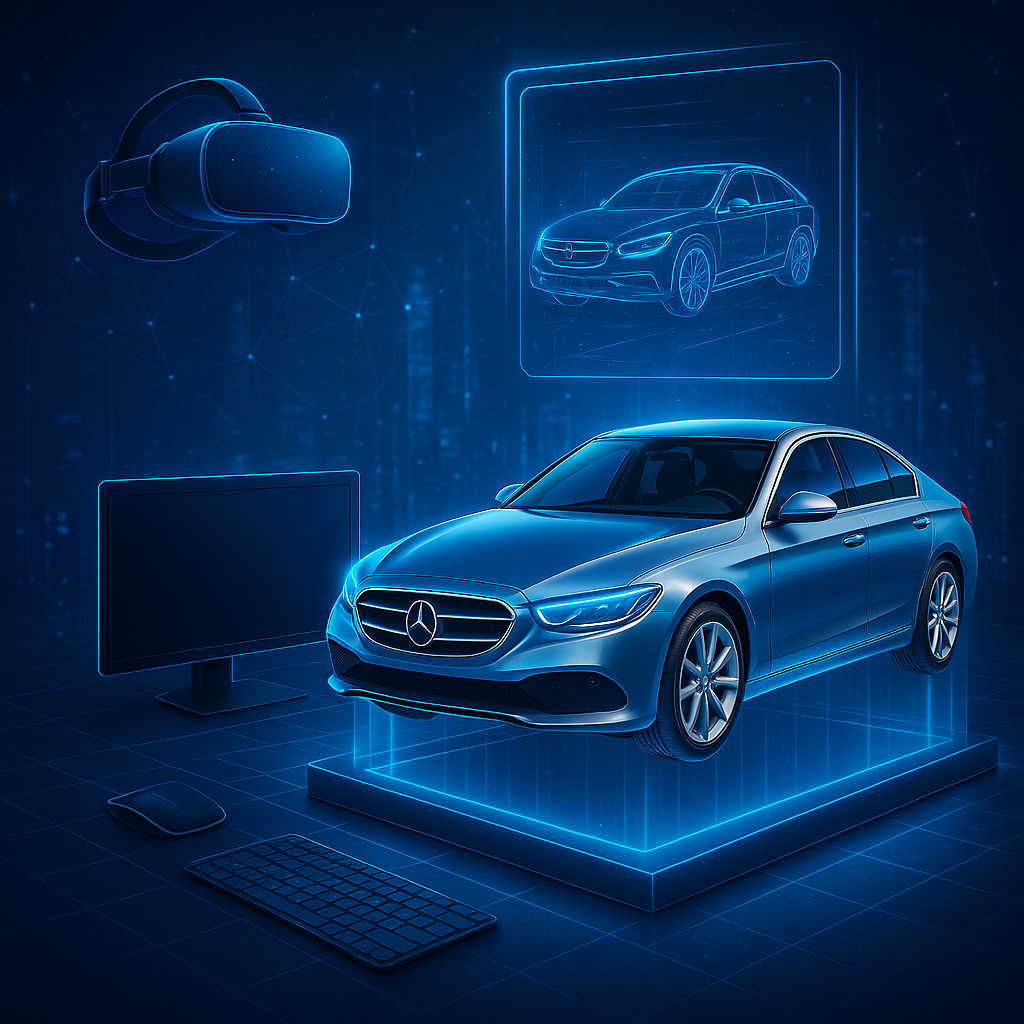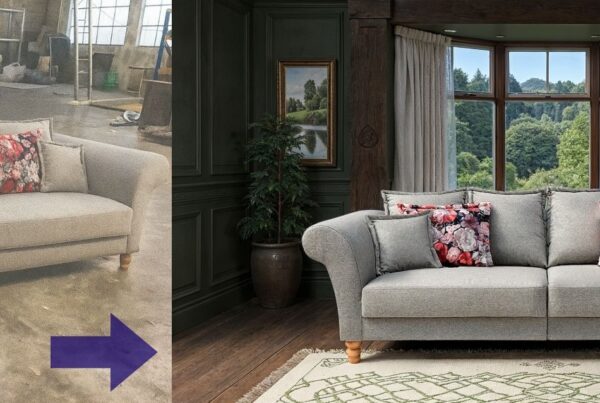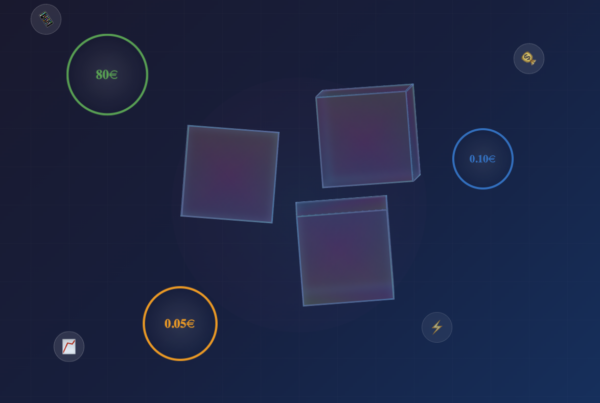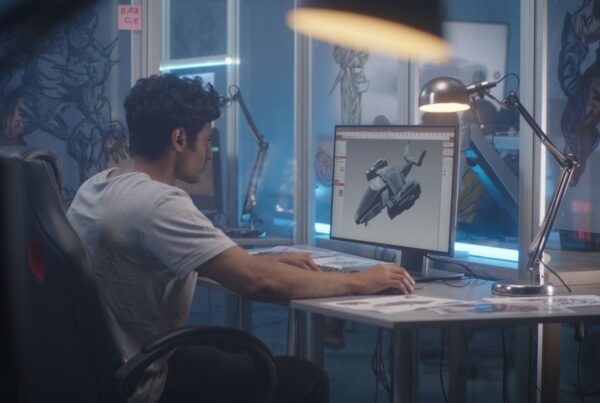AR product visualization is changing our experience when we shop online, and it’s now simpler than even for customers to try out products virtually before buying. Rather than relying on static photos or vague descriptions, shoppers can now view detailed 3D models, to be interacted with directly in real-time, and even be placed within their actual environment With augmented reality shopping experiences.This is not only visually stunning technology — it instills trust, increases engagement, and helps shoppers feel confident about their choices. From reducing return rates to soaring conversion rates, companies adopting virtual product demonstrations gaining an edge over competitors within the competitive eCommerce market.If you’re looking to future-proof your online store, understanding how AR product understanding why visualization works — and why it’s increasingly important — is the first step toward bringing the kind of customer experience that today’s buyers expect.
What Is AR Product Visualization?
Imagine being able to view a new sofa or a pair of sunglasses at your own place prior to purchase them online. AR product visualization facilitates that. It employs augmented reality shopping technology to superimpose a 3D representation of a product onto the real world using your smartphone, tablet, or computer. Rather than guessing what an item will fit or appear, consumers can be interacted with virtually as if it was present.
In eCommerce, AR product visualization turns flat images into an immersive,
virtual product demonstration. Customers are able to turn, zoom, and even “put” products into on their coffee tables or on their desktops, viewing every aspect close at hand. This immersive experience exceeds conventional 2D photos through eliciting confidence and enthusiasm while shopping.
For online brands and retailers, it’s a game-changer since it provides 3D models and AR experiences, however, enhance not only customers’ trust but also considerably cut product returns. In addition, it achieves a “wow factor” that differentiates businesses from the competition.
As consumer preferences change, incorporating augmented reality shopping interactions is swiftly transitioning from a “nice-to-have” to a “must-have.”
Companies that adopt virtual product showcases early are positioning themselves for better customer relationships and increased sales.
How AR Product Visualization Improves Customer Experience
AR was cutting-edge five years ago. Now, it’s setting the new norm for online shopping. Why? Because augmented reality shopping addresses one of the greatest issues in eCommerce: uncertainty. Now customers can know if a table will fit within their dining room or if a sneaker looks on their feet — before clicking the “buy” button.
Statistics indicate that consumers who use AR product visualization are significantly more likely to make purchases. They are more likely to return, too, for that next “try-before-you-buy” experience. With short attention spans and competition for attention being intense in an online world, having an AR product visualization feature can be the difference between a bounce and a sale.
But it’s not only about increasing numbers. Retailers are forging deeper emotional connections with your customers. Getting a 3D representation of a new sofa to view in your sitting area isn’t simply convenient — it’s personal, exciting, and memorable.
Top players like Amazon and IKEA have already shown the strength of AR, pushing Massive spikes in the rate of conversions and satisfaction among customers. As customers increase to miss out on opportunities to create personalized product experiences.
The Impact of AR on Conversion Rates and Return Rates
It’s straightforward: AR product visualization increases conversions and reduces returns — two of most important KPIs for eCommerce. Numbers don’t lie. Research indicates that employing 3D models and AR experiences can raise the rate of conversions by 45% and reduce returns by 15%.
Why? When consumers view realistic previews, they feel more confident. They are less likely to buy on impulse and be more likely to make selections that really suit their requirements. This implies less surprise when the box is delivered, and less expensive return shipping for brands.
Even industry giants like Amazon have chronicled the impact of augmented reality shopping. Listings that have a virtual product showcase outperform standard listings — not just slightly, but dramatically. On average, items that have “View in Your Room” or “Try-On” features have twice the rate of purchase than static images.
Ultimately, AR does not only produce a “cool” factor. It produces a business advantage. More satisfaction, reduced operating expenditures, and increased lifetime value of customers — through AR product visualization.
Test MAZING 2D to 3D AI Tool Today!
Creating AR Visualizations from Product Photos: How It Works
You don’t require a Hollywood studio to produce an AR product visualization in today’s world. With like MAZING, which turns plain product pictures into interactive 3D models relatively simple and scalable.
Here’s how it works:
- To start, brands provide 2–3 high-resolution product images and standardised measurements.
- Next, AI technology generates a detailed 3D model, reviewed for quality and accuracy.
- Then, a 3D model is created by AI technology and checked for quality.
Ultimately, this model is embedded within a website, application, or advertisement — seamlessly virtual product showroom that customers can browse.The best part about it is that this process is less expensive and quicker than standard 3D modeling.
No need for costly photoshoots or CAD drawings. Solutions such as MAZING provide integrated augmented reality shopping features, thereby enabling merchants to introduce AR experiences simply.
This democratization of AR makes businesses of every size — and not only large international companies — provide customers with state-of-the-art experiences.
How Much Does AR Product Visualization Cost?
If you believe product visualization through AR is an expensive proposition for large brands alone, you might be mistaken. New solutions have rendered it incredibly affordable. For instance, it’s only €80 to create a 3D model using MAZING.
With an augmented reality shopping viewer, the cost can be as low as €0.05 per view, volume permitting. Consider this against the expense of traditional product photos and you’ll understand why brands are leaping into virtual product displays.
Of course, the cost can be determined by complexity. A simple chair could be less expensive than an intricate watch or piece of jewelry. However, the ROI is obvious: brands continuously post a positive return on investment within only a few months after launching
For eCommerce businesses looking to expand, the scalability, relatively low initial cost, and quick return make product visualization through AR one of the most advisable investments for marketers right now.
Implementing AR Visualization: Key Steps for eCommerce Stores
Ready to implement AR product visualization within your store? Here’s an easy-to-follow roadmap:
- Organize your materials — Collect high-quality product images and important dimensions.
- Collaborate with a platform — Engage with experts such as MAZING who make it easy to create 3D models.
- Approve and test — Carefully review your AR content for realism and quality.
- Seamless Integration — Embed AR viewers or buttons directly onto your site through easy plugins or pieces of code.
- Promote your experience – Accentuate your online product demonstrations in advertisements, newsletters, and social media posts.
Tip number one: don’t bury AR features way down on product pages. Present them front and center! Customers must know immediately that they can shop using augmented reality — it’s a selling feature. By doing this, you’re not simply adding a technological gimick. You’re redesigning your whole customer experience, making it more immersive, reliable, and ready for the future.
Step-by-Step Guide: How to Convert a 2D Image into a 3D Model with AI
There has never been an easier time to convert a 2D image into a 3D model, with AI tools on the job. No matter which one you choose, Mazing, Meshy AI, or Sloyd AI, the process is easy yet effective. The following is a step-by-step guide to get started:
Step 1: Choose the Right AI 3D Model Generator
The ideal tool for AI 3D model design will depend on your needs. Mazing is ideal for online stores and businesses due to its frictionless 3D commerce integration. If you would prefer more control over the design, then Sloyd AI comes with parametric modeling and is suitable for game items and digital assets.
Step 2: Upload a 2D Image or Multiple Angles
Once you have chosen your tool, upload a 2D image of the object that you want to transform. Some platforms allow several images from different angles, making it more accurate. AI scans the depth, texture, and structure of the image to recreate a 3D model.
Step 3: AI Processing and Model Generation
The AI system will take a few seconds to a minute to process the image and create a 3D model. Advanced software like MAZING AI uses machine learning-based algorithms to predict missing data, delivering an improved and high-quality result.
Step 4: Enhance the Model with Designers
If you require hyper-realistic 3D images, you can utilize Mazing’s AI model enhancement process to improve textures and meshes. As AI is not perfect, this step is recommended if you want to use the models for e.g. product configurators.
Step 5: Adjustments & Export the 3D Model
Export in a format like STL, OBJ, or glTF, depending on what you’re going to use it for—3D printing, gaming, or augmented reality applications.
Success Stories: Brands Winning with AR Product Visualization
Success stories from real-world applications confirm the huge potential for AR product visualization. Art-Mind Shop: following the implementation of AR, they experienced a 42% boost in conversion rates and more than €6,000 in incremental revenue per best-seller.
Then there’s Modus Furniture, which utilizes 3D models and AR not only for B2C but also to strengthen B2B relationships. Their retailers experienced less return and required less showroom space through virtual product displays.
Even at its relatively small size, businesses like Affordable Furniture experienced online purchases increase 700% following the addition of basic store AR cards that corresponded to augmented reality
shopping experience.
The trend is obvious: brands embracing AR product visualization ahead of the curve are enjoying significant rewards — not only in sales, but also in brand image, customer loyalty, and market position.
Test MAZING 2D to 3D AI Tool for Free






